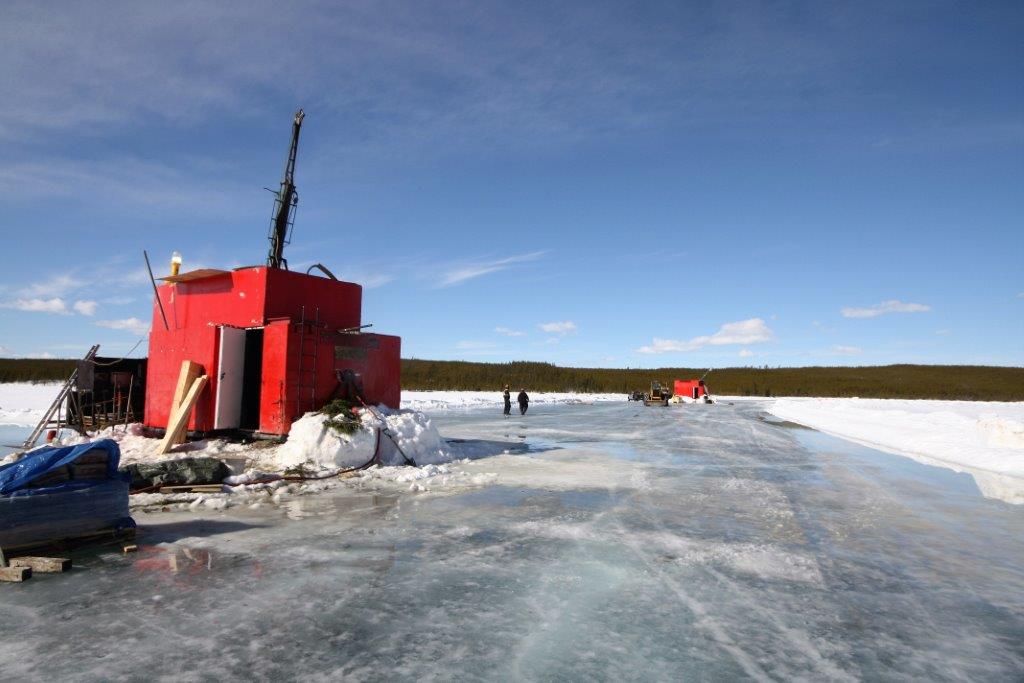Denison drills 4 metres of 2.14% U3O8 at Wheeler River Project

Drill testing on the K-North trend south of the Gryphon deposit at the Wheeler River Project in the Athabasca Basin of northern Saskatchewan. Photo courtesy Denison Mines Corp.
Denison Mines Corp. [DML-TSX; DNN-NYSE] reported results from the 2020 regional exploration program at the company’s 90%-owned Wheeler River uranium project, including the discovery of new high-grade unconformity-hosted uranium mineralization up to 7.66% U3O8 (triuranium octoxide).
Drill hole WR-741AD2, which was completed along the K West conductive trend on the western side of the Wheeler River property, intersected high-grade uranium mineralization approximately 4 km north-northwest of the Phoenix uranium deposit.
Similar to Phoenix, uranium mineralization discovered in WR-741AD2 is interpreted to straddle the unconformity contact of the underlying basement rocks and the overlying Athabasca basin sandstone. In addition to high-grade uranium, the assay results from WR-741AD2 are highlighted by the presence of high-grade nickel: 2.14% U3O8 over 4.0 metres (including 7.66% U3O8 over 1.0 metre) from 640.3 to 644.3 metres; and 4.29% nickel over 6.5 metres (including grades of up to 19.1% nickel) from 637.8 to 644.3 metres.
David Cates, President and CEO, said: “Regional exploration at Wheeler River in 2020 delivered on our objective to identify additional high-grade uranium mineralization that could produce a satellite deposit for the planned Phoenix in-situ recovery (ISR) operation, which is currently advancing through the environmental assessment (EA) process. Our Saskatoon-based exploration team has a tremendous track record of making high-grade uranium discoveries – transforming the Wheeler River Project into the largest undeveloped uranium project in the infrastructure-rich eastern portion of the Athabasca basin.”
Andy Yackulic, PGeo, Denison’s director, exploration, added: “The new high-grade mineralization at K West was discovered with our second-last drill hole of the season. As a result, there remains potential for us to delineate a broader mineralized zone, as the new mineralized intersection is open on section to the footwall side of WR-741AD2 and for several hundred metres along strike in both directions. The exploration team is also very interested in the presence of high-grade nickel mineralization along the margins of the uranium mineralization — as this type of zonation presents very similarly to other well-known and sizable high-grade unconformity uranium deposits in the Athabasca basin, including Cigar Lake, Fox Lake, Tamarack and Key Lake.”
